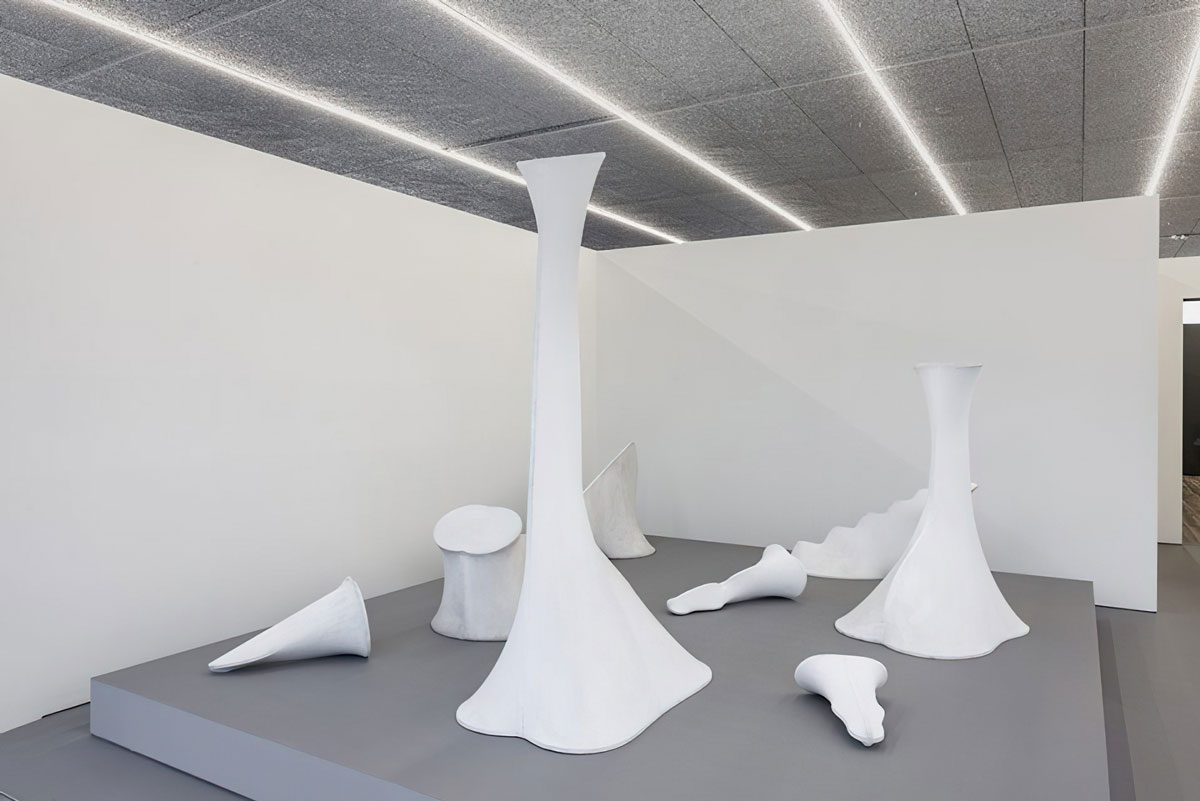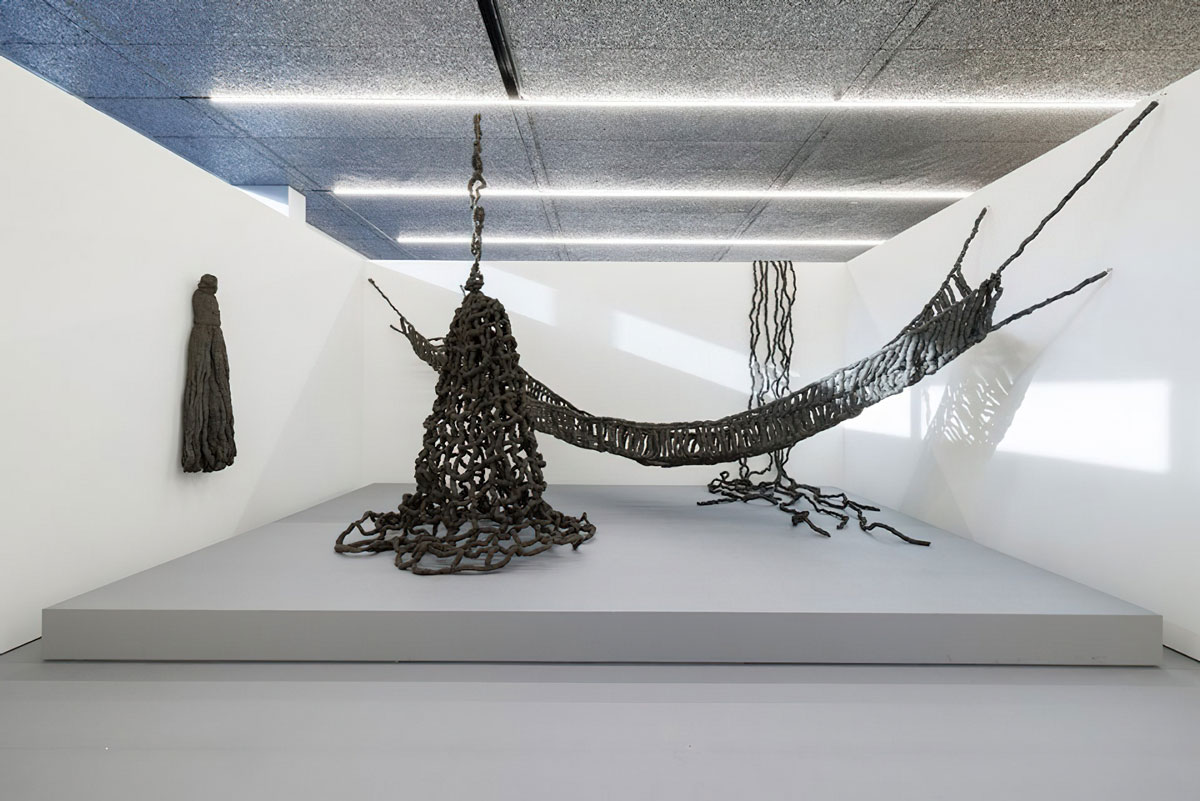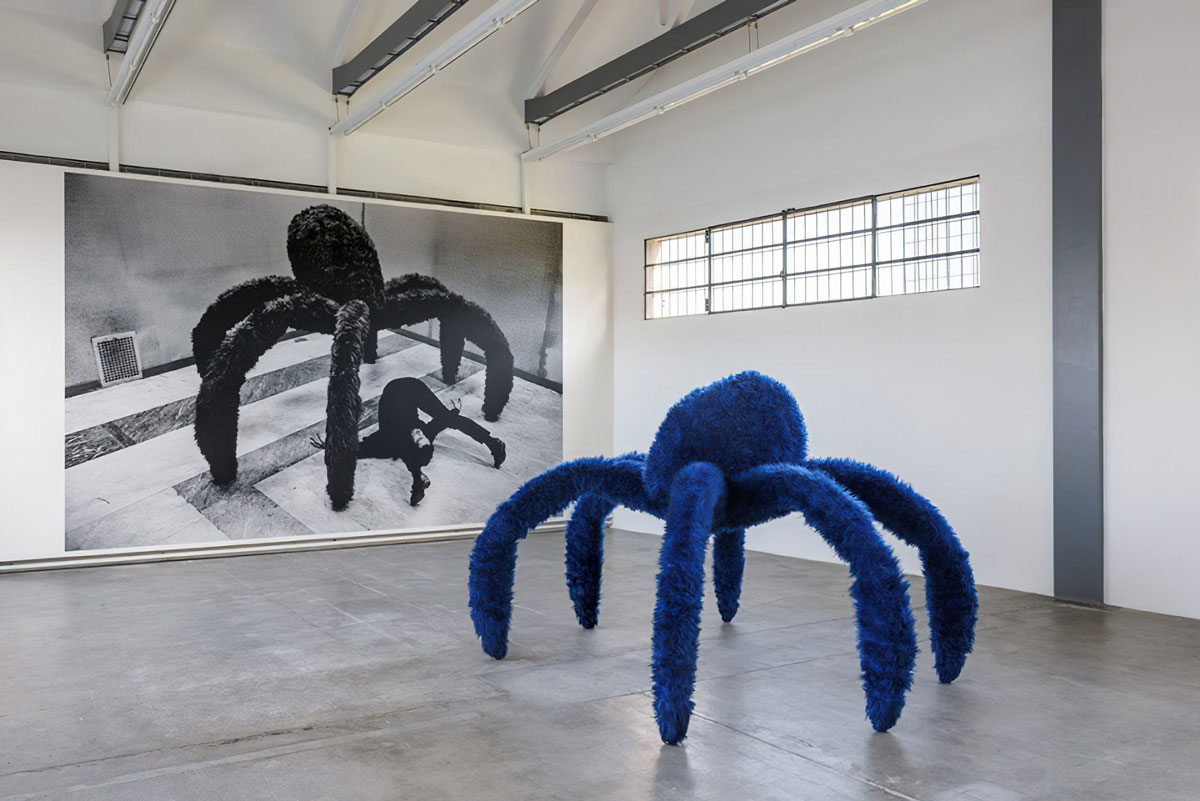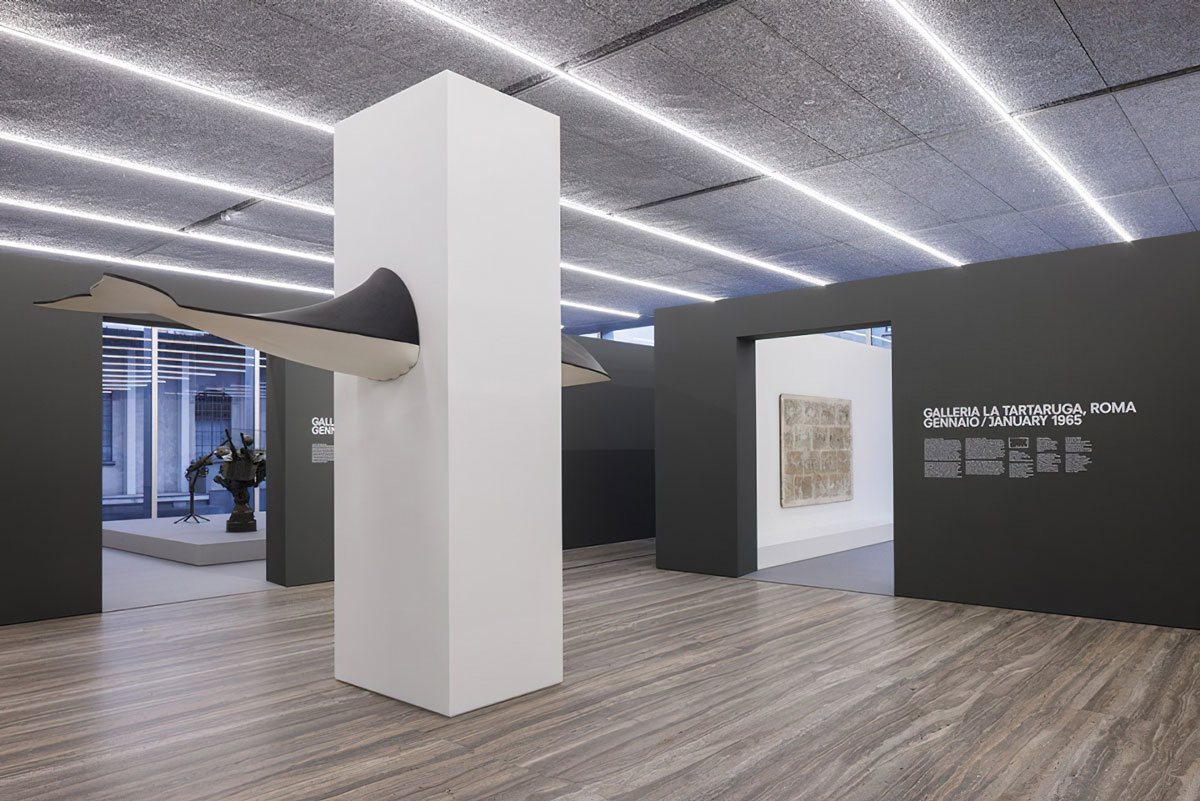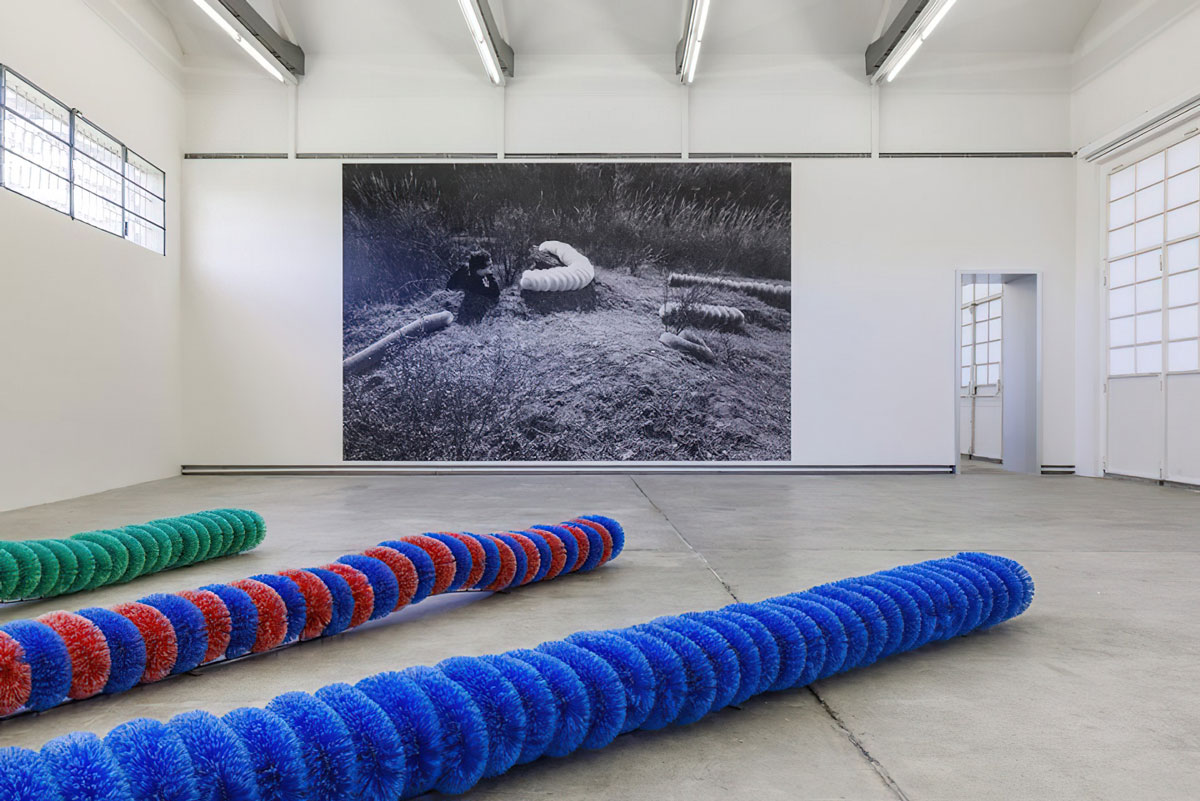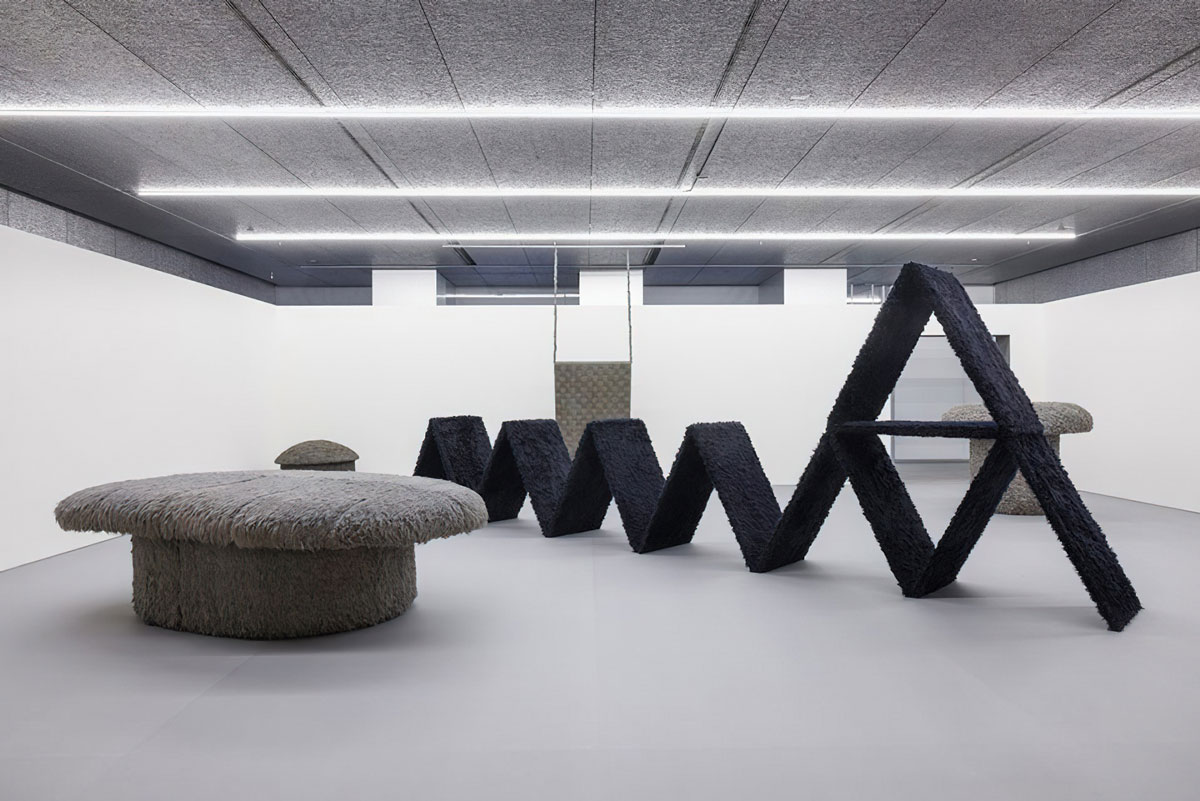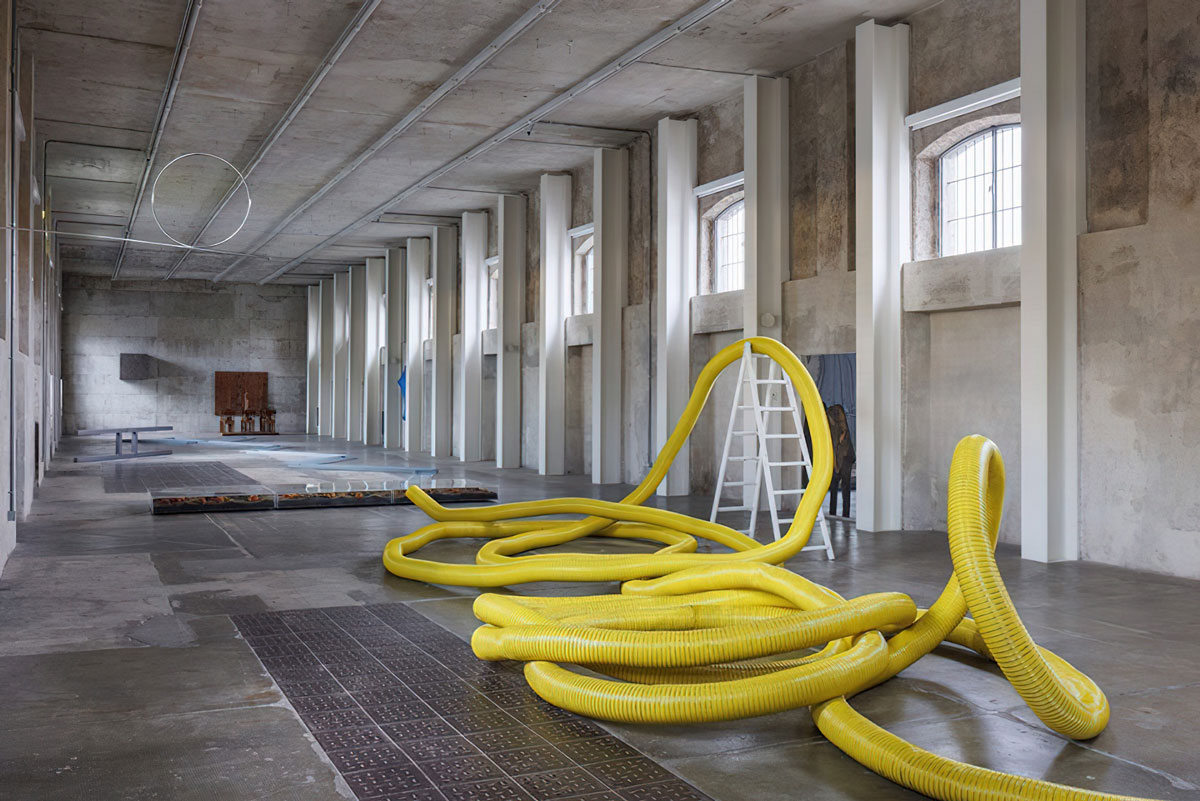PRESENTATION: Pino Pascali
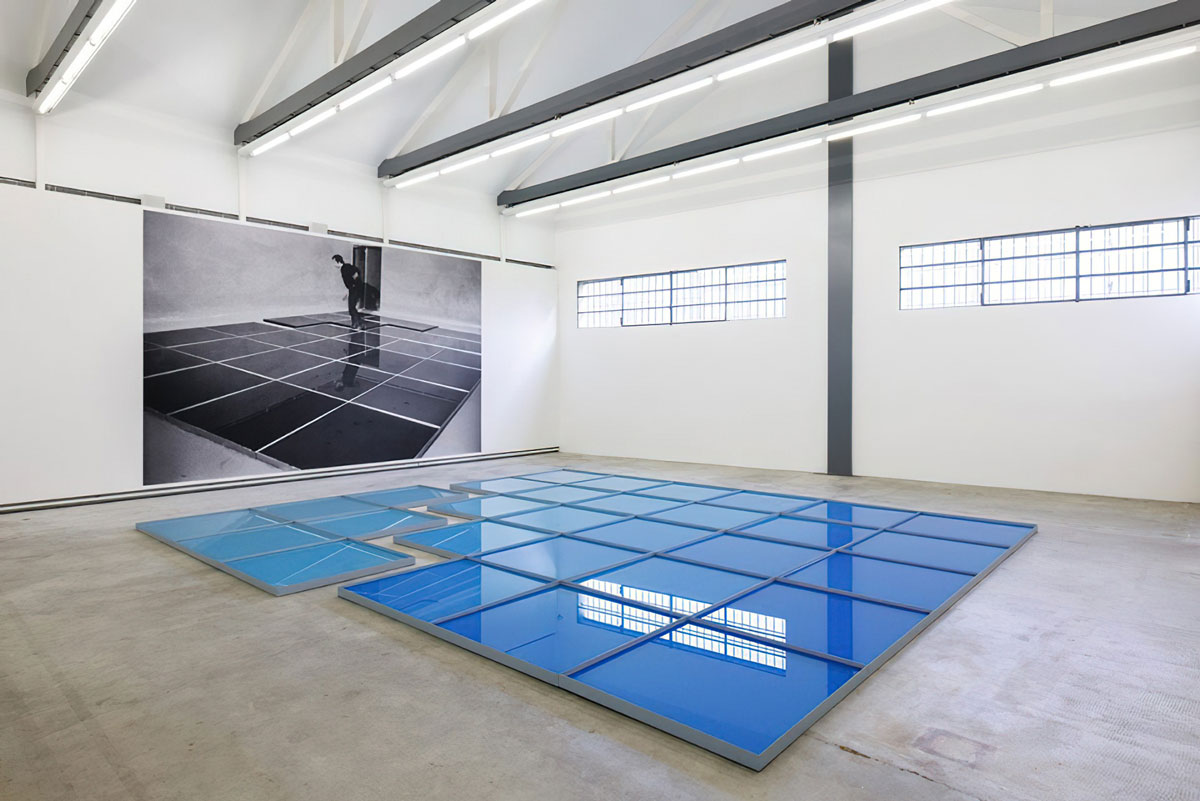 Pino Pascali was a sculptor, set designer and performer, today considered one of the foremost exponents of Arte Povera. Having followed his family to Albania between 1940 and 1941, and later moved to Polignano a Mare, Italy, before settling in Naples greatly influenced Pascali’ work, which brings together various symbols of Mediterranean culture, such as fields, the sea, land and animals.
Pino Pascali was a sculptor, set designer and performer, today considered one of the foremost exponents of Arte Povera. Having followed his family to Albania between 1940 and 1941, and later moved to Polignano a Mare, Italy, before settling in Naples greatly influenced Pascali’ work, which brings together various symbols of Mediterranean culture, such as fields, the sea, land and animals.
By Efi Michalarou
Photo: Fondazione Prada Archive
The retrospective “Pino Pascali” is divided into four sections, each presenting a unique perspective on Pino Pascali’s work, and unfolds through three buildings of Fondazione Prada’s Milan venue: the Podium, the Nord and the Sud galleries. The set design includes forty-nine works by Pino Pascali from Italian and international museums and distinguished private collections; nine artworks by prominent post-war artists; selected photographs and a video portraying Pascali with his works. Pascali moved to Rome in 1955 to study scene painting and set design at the Accademia di Belle Arti di Roma. He worked as an assistant scenic designer in many television productions of the Italian broadcaster Rai. He also collaborated as a set and graphic designer with cinema and advertising companies. In 1965, Galleria La Tartaruga in Rome hosted his first solo show. In 1968, Pascali died tragically in a motorcycle accident at the age of thirty-two, in the same year as his solo presentation at the Venice Art Biennale. Despite his brief career, he contributed to significant developments in the Italian and international post-war art scene. This exhibition aims to examine the innovative scope of Pascali’s work, particularly his sculpture, which, over the last five decades, has had a substantial impact on several generations of artists and critics and continues to attract the growing attention of an international audience. The ground and first floors of the Podium host the first section of the exhibition, which examines how Pascali made five solo exhibitions by creating imaginative environments rather than simply selecting works from his studio. Rooms simulating the spatial dimensions of the original galleries in which Pascali exhibited allow visitors to experience the unconventional display methods the artist used. They replicate those created for his first solo show at La Tartaruga (Rome,1965) with two series that feature, on one side, “Primo piano labbra and La gravida o Maternità”, and on the other side, “Colosseo, Ruderi sul prato”, and “Muro di pietra”. His 1966 exhibition at Sperone gallery, Turin, is represented with the “Armi” series, and his 1966 and ‘68 shows at L’Attico gallery, Rome, with the “Animali” and steel wool sculptures such as “Trappola”. Works from the 1968 Venice Art Biennale monographic presentation include “Cesto”, “Contropelo”, “Pelo”, “Ponte levatoio” and “Solitario”. The second section of the exhibition is dedicated to the natural and industrial materials employed by Pascali. It explores where he sourced them, what they were used for in commerce, which other artists were also using them, and what has happened to them over time. Visitors can walk through different areas, each focusing on a specific material such as canvas, dye, earth, Eternit fiber cement, fake fur, steel wool, foam rubber, car components, hay, and scrubbers. Key works such as “Barca che affonda” (1966), “Campi arati e canali di irrigazione” (1967), “Pelle conciata” (1968) and “L’Arco di Ulisse” (1968) are presented alongside magazines and catalogues from the 1960s, and newly filmed videos with conservators, so that the audience can better understand the qualities, contexts, and conservation issues of the materials Pascali experimented with in his career. The third part develops in the Nord gallery. It demonstrates how Pascali made strategic contributions to three significant group shows: “Fuoco Immagine Acqua Terra” curated by Alberto Boatto and Maurizio Calvesi at L’Attico (Rome, 1967); Cinquième Biennale de Paris: Manifestation Biennale et Internationale des Jeunes Artistes curated by Jacques Lassaigne at Musée d’Art Moderne de la Ville de Paris (Paris, 1967); and “Arte Povera” curated by Germano Celant at Galleria de Foscherari (Bologna, 1968). This section includes four of Pascali’s renowned works: “Ricostruzione del dinosaur” (1966), “1 metro cubo di terra” (1967), “9 mq di pozzanghere” (1967), and “Fiume con foce tripla” (1967), placing them in dialogue with landmark works by other artists including Alighiero Boetti, Agostino Bonalumi, Mario Ceroli, Luciano Fabro, Piero Gilardi, Jannis Kounellis, Eliseo Mattiacci, Gianni Piacentino and Michelangelo Pistoletto, who exhibited alongside him. On view in the Sud gallery, the fourth chapter of the exhibition examines the way Pascali performed with his sculptures in legendary photographs taken by Claudio Abate, Ugo Mulas, and Andrea Taverna, and the 16mm video, “SKMP2” (1968), by Luca Maria Patella. Four works: “32 mq di mare circa” (1967), “Vedova blu” (1968), “Cinque bachi da setola e un bozzolo” (1968), and “Cavalletto” (1968)—are displayed next to four photographs enlarged to billboard scale.
Photo: “Pino Pascali”, Exhibition view, Fondazione Prada-Milan, Photo: Roberto Marossi, Courtesy Fondazione Prada
Info: Curator: Mark Godfrey, Fondazione Prada, Largo Isarco 2, Milan, Italy, Duration: 28/3-23/9/2024, Days & Hours: Mon & Wed-Sun 10:00-19:00, www.fondazioneprada.org/
